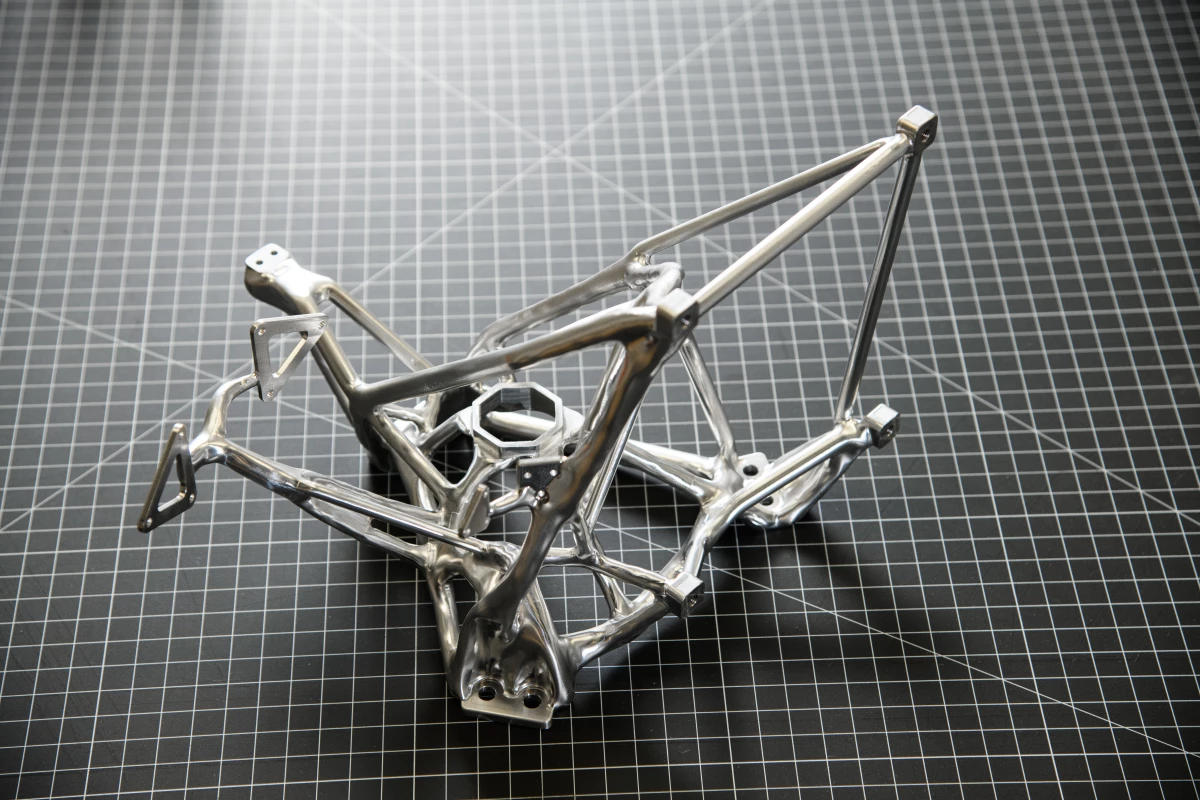Space launch costs have dropped like a stone over the last decade or two, but it still ain't cheap to lift mass into orbit – SpaceX's best prices are still well over US$1,000 per kilogram (2.2 lb). So aerospace remains an industry where lightweighting can justify nearly any cost.
In that context, it's a little strange that it's taken NASA so long to start using generative design in its parts. We wrote back in 2017 about a new button starting to pop up in Autodesk's Fusion360 CAD software that allows human designers to rough up a design for a part, get all the critical measurements right, tell the software what loads and stresses the part needs to withstand, and from which directions, and then let the software go away and start experimenting on how to get the job done with maximum efficiency.
The software then begins iterating, changing things a bit at a time, much like random mutations try out new combinations of animal DNA, and testing it against the necessary performance targets, much like life tests its DNA mutations. Over millions of generations, the software adds a little metal here, removes a little there, and checks if the part is stronger or weaker, lighter or heavier than its predecessors.
Within a surprisingly short time (a couple of hours, if given access to high-powered cloud processing), it comes back with shapes humans could never have directly designed. But they're strikingly similar to the work of nature; where there's more stress to be dealt with, they gradually become thicker. Where there's less stress, they get thinner. Support structures waste away where they're not needed, and tend to line up with the load path. In short, they start looking weirdly bony and organic.

But they work. NASA research engineer Ryan McClelland says these "evolved structures" often do their jobs much better than much heavier human-designed parts: "We found it actually lowers risk. After these stress analyses, we find the parts generated by the algorithm don’t have the stress concentrations that you have with human designs. The stress factors are almost 10 times lower than parts produced by an expert human."
McClelland has pioneered and championed the use of generative design at NASA, demonstrating its ability to drop weight on individual structural components by as much as two thirds.
And while this evolutionary AI technique finds its fullest expression when combined with additive manufacturing, or 3D printing processes, which let it design shapes that can't be conventionally manufactured, it seems NASA is still designing around the capabilities of its commercial milling partners at this stage.
But the process gets parts in hand much, much faster than NASA's typical design workflow.
"You can perform the design, analysis and fabrication of a prototype part, and have it in hand in as little as one week,” McClelland said. “It can be radically fast compared with how we’re used to working."

The parts have been used across a wide range of projects, from the Mars Sample Return mission to space telescopes, space weather monitors, planetary instruments, balloon observatories and others. The criss-cross shapes above are an example; they're titanium scaffolds for the back of the EXCITE telescope scheduled to launch this year, and they connect the carbon fiber plate supporting the main mirror to an IR receiver housed inside an aluminum cryogenic chamber.
“We have a couple of areas with very tricky design requirements,” says physicist Peter Nagler, who's working on the EXCITE project. “There were combinations of specific interfaces and exacting load specifications that were proving to be a challenge for our designers ... These materials have very different thermal expansion properties. We had to have an interface between them that won’t stress either material.”
In an organization like NASA, where projects rarely share parts, there's much more to be gained from custom lightweight designs than there is from designing for bulk, cheap manufacturing. So this technology is a great fit.
“If you’re a motorcycle or car company,” McClelland said, “there may be only one chassis design that you’re going to produce, and then you’ll manufacture a bunch of them. Here at NASA, we make thousands of bespoke parts every year.”
McClelland very much has his sights set on introducing additive manufacturing to the process, which could accelerate things even further and enable even greater weight and cost savings in these kinds of bespoke parts. It'll also unlock the ability to print complex moving parts – not to mention the idea of printing parts in space.
"These techniques could enable NASA and commercial partners to build larger components in orbit that would not otherwise fit in a standard launch vehicle," says McLelland. "They could even facilitate construction on the Moon or Mars using materials found in those locations.”
Source: NASA







